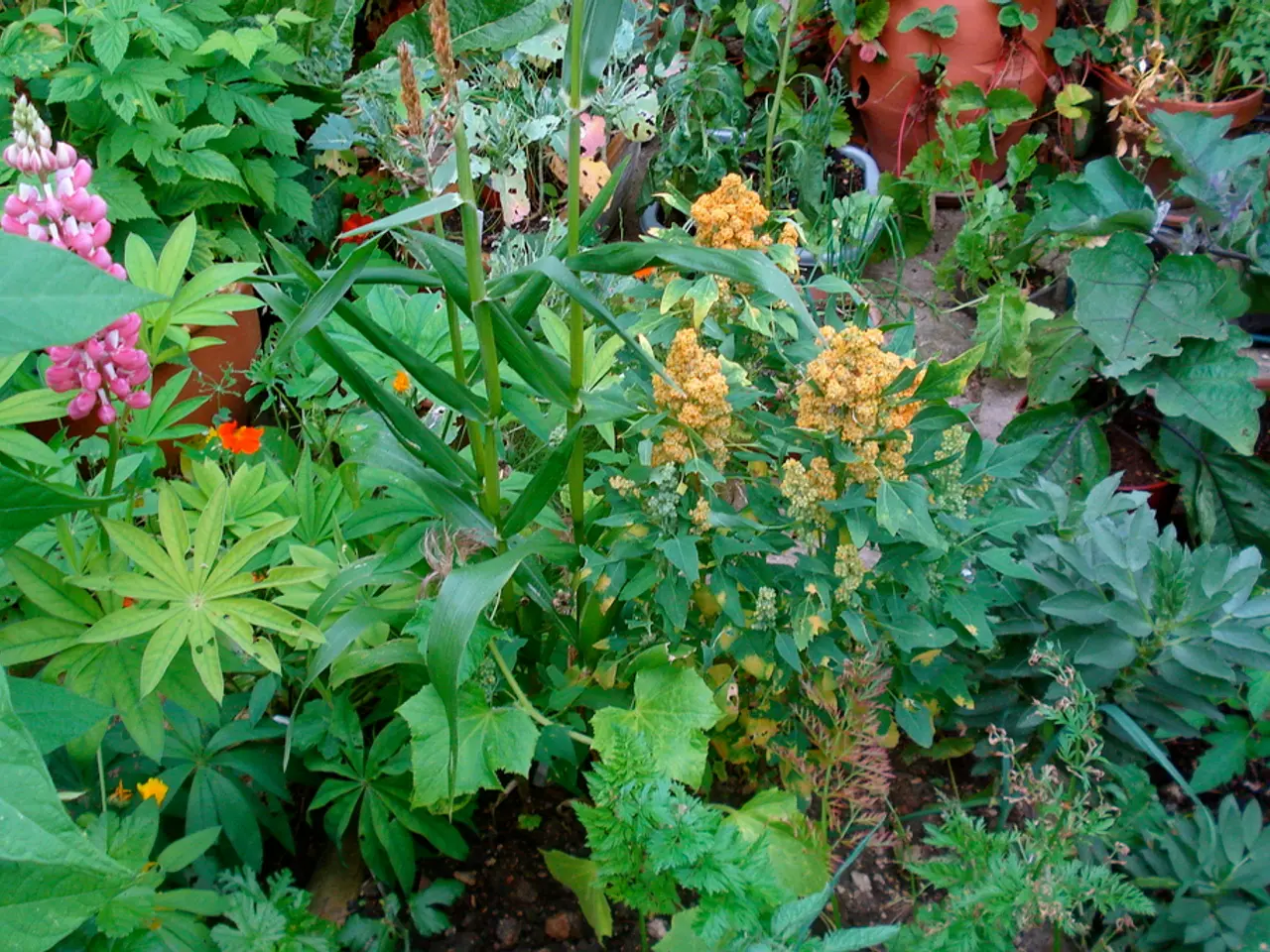Inexpensive Ways to Create and Maintain a Thriving Garden
Saving Money and Going Green in Your Garden: Budget-Friendly Ideas and Eco-Friendly Tips
Gardening on a budget doesn't have to mean compromising on creativity or the health of your plants. Here are some practical, budget-friendly ideas and eco-friendly tips to help you create a beautiful and thriving garden without breaking the bank.
Propagating Plants and Exchanging Divided Plants
Propagating plants by taking cuttings and digging up suckers is an easy process that can save you money. Dividing mature plants is also a simple method to create new perennial garden plants. By exchanging divided plants with gardening friends, you can acquire new plants and give your garden an exciting new look.
Choosing Native Plants and Installing a Rain Barrel
Opting for native plants that are better suited to your climate can save you time and money in your garden. Installing a rain barrel to collect rainwater is a great eco-friendly and budget-friendly option for watering plants.
Finding Free Gardening Resources Online
To find and utilize free gardening resources on social media platforms like Instagram, Facebook, YouTube, and Pinterest, follow a structured approach:
- Follow Popular Gardening Accounts and Blogs
- Instagram and Facebook have many gardening influencers and pages sharing DIY garden tips, budget-friendly ideas, and tutorials. Examples include Epic Gardening, Garden Rant Blog, and Gardener's Path.
- On Instagram and Pinterest, search hashtags like #BudgetGarden, #DIYGarden, #SmallSpaceGarden, or #UrbanGardening to discover posts with cheap or recycled garden ideas.
- Use Video Tutorials on YouTube
- YouTube gardening channels like Epic Gardening provide detailed DIY garden setups and affordable gardening hacks.
- Search for videos on creating raised beds, vertical gardens, or repurposing household items into planters to find step-by-step guides.
- Join Gardening Groups and Communities
- Facebook has many gardening groups where members share free advice, plant swaps, and budget gardening projects.
- Apps like GrowIt allow you to share photos, see what others plant in your area, ask questions, and get free gardening tips from a community of gardeners.
- Explore Pinterest for Visual Inspiration
- Pinterest boards often gather creative budget-friendly gardening ideas such as DIY lighting, vertical planters, and herb gardens.
- Ideas like repurposing gutters for hanging herb gardens or creating simple raised beds are well documented through pins and tutorials.
- Utilize Free Online Tools for Plant Identification and Advice
- Use free apps like Garden Compass or ID Weeds for plant ID and tailored gardening advice, making it easier to manage your garden efficiently and save costs by treating issues early.
- Incorporate Budget DIY Projects
- Follow creators who share inexpensive garden decor ideas, such as using dollar store solar lights to add lighting, thrifted materials for bird baths, or DIY planter boxes on wheels.
- This can make your garden both beautiful and budget-conscious.
Additional Tips
- Using netting for pest control can be effective, and cheap IKEA net curtains can be used successfully.
- Starting seedlings later at a south-facing window or using the winter sowing method can help save on growing lights costs.
- Multiple seedlings can be grown in one pot.
- Building a raised bed with old windows or using recycled windows to harden off plants in spring can provide added protection.
- Taking advantage of natural microclimates by using exterior walls or building a pallet fence to catch snow can help protect plants.
- Watering individual plants instead of the entire garden area is recommended to conserve water and monitor plant growth.
- Recycled bed sheets, reused buckets, and glass jars work well for frost protection.
By actively engaging with these platforms, you can continuously access free, creative, and affordable gardening ideas to suit your budget and space, enhancing your garden without significant expense. Happy gardening!
- Family members can contribute to the garden by propagating plants, exchanging divided plants, or pooling resources to create raised beds or a greenhouse, fostering a sense of community and shared responsibility.
- In cold climates, building a greenhouse or using no-till methods can help make gardening more sustainable and cost-effective, as it minimizes soil erosion and reduces the need for excess heating in the cold months.
- By choosing organic planting methods and incorporating compost into the soil, gardeners can grow healthier plants while reducing chemical runoff that could harm nearby water sources.
- Organic fertilizers made from kitchen scraps or purchased inexpensively can help nourish the garden without costing an arm and a leg.
- A home-and-garden lifestyle embracing organic methods and sustainable practices can contribute to a healthier ecosystem and improve overall well-being, not just for the garden but for the entire household.
- Harvesting vegetables from the garden can provide nutritious food for the family, reducing grocery costs and promoting a more self-sufficient lifestyle.
- Growing plants in raised beds or containers helps conserve water, as irrigation is easier, and it allows for better soil management, enabling gardeners to grow produce more effectively.
- Adopting a no-till lifestyle not only reduces the carbon footprint of the garden but also saves money and time, as tilling the soil traditionally requires energy and labor.




